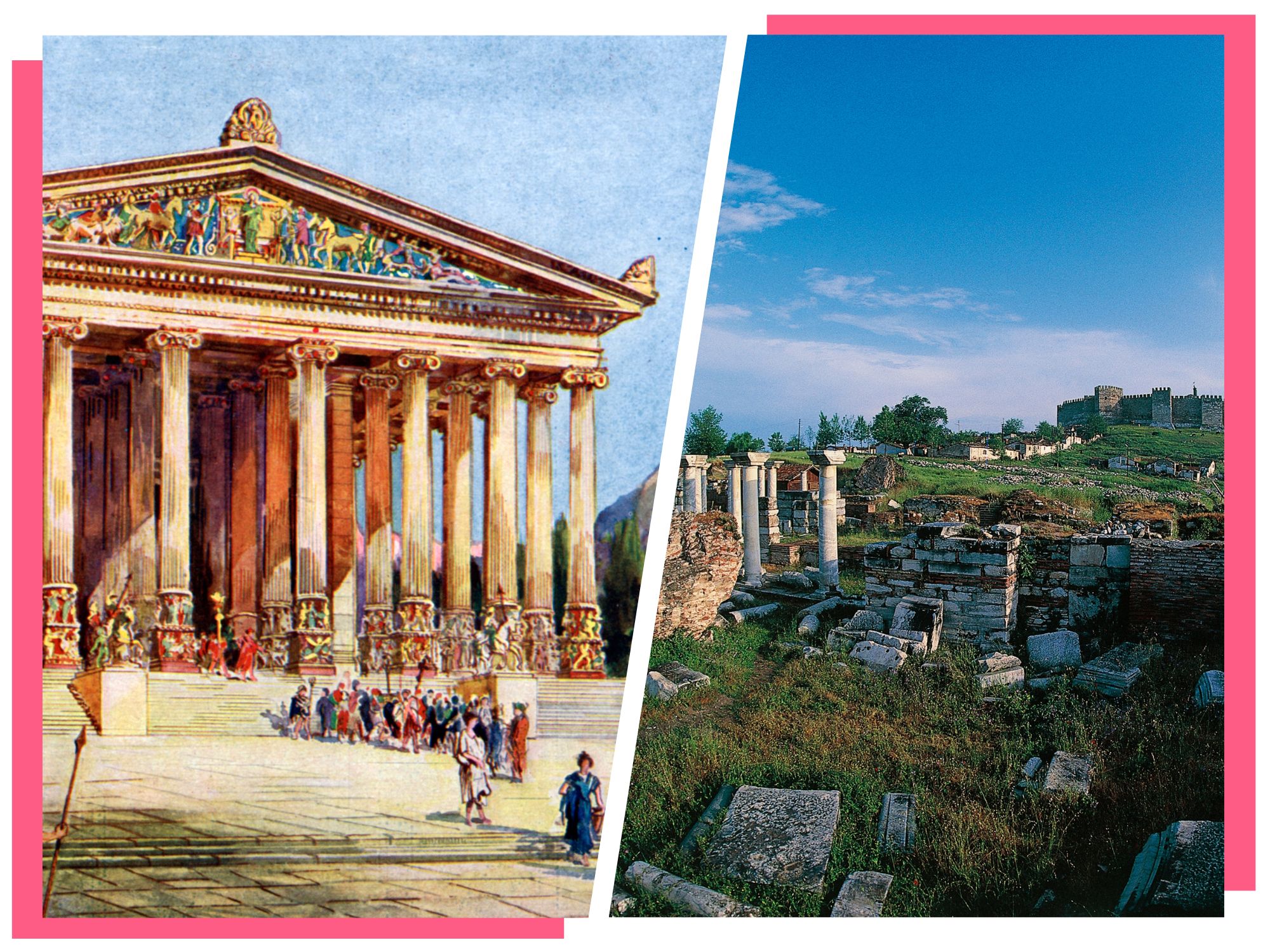
In 356 B.C.E., a man named Herostratus slipped into the Temple of Artemis in Ephesus, Turkey, and set fire to its wooden roof, reducing much of the giant structure—which the Greek writer and physicist Philon of Byzantium referred to as a wonder of the ancient world—to ashes.
This wasn’t the first time the temple was destroyed. Nor would it be the last. The first iteration was built sometime after Athenian colonists founded Ephesus (Selcuk today) around 1,000 B.C.E., only to be swept away by a severe weather event.
Two additional centuries passed by until, around 550 B.C.E., the Lydian King Croesus decided to finance the construction of a bigger, better temple dedicated to the goddess of the hunt. The Greek historian and geographer Herodotus claims this construction took more than 100 years, and for good reason, as the finished structure ranked among the largest in all of human history, measuring 377 by 180 feet in length and width, respectively.
Engraving of the architects looking at the finished Temple of Artemis at Ephesus. Photo: Getty Images.
Writings attributed to the Roman philosopher Pliny the Elder mention 127 columns, standing 65 feet tall and decorated with reliefs of scenes and characters from classical Greek mythology. Croesus’s architects clearly learned from their predecessors, as their new and improved temple was built on a raised plateau that provided protection against natural disasters.
Inside, the temple was resplendently furnished—a fitting tribute to the goddess. Royals and merchants arrived to deposit coins and jewelry in homage. The ancient wonder joining the ranks of other legendary structures, including the Pyramids of Giza and the Colossus of Rhodes. Poet Antipater of Sidon, for one, was in absolute raptures after viewing the monument in person: “when I saw the house of Artemis that mounted to the clouds… I said, ‘Lo, apart from Olympus, the Sun never looked on aught so grand.'”
Johann Bernhard Fischer von Erlach, engraving of the Temple of Artemis (1725). Photo: Getty Images.
The marvel would not stand for long, however. The day Artemis’s temple caught fire happened to coincide with the birth of Alexander the Great—an act of serendipity that Greek historian Plutarch recorded, saying the temple “burnt while its mistress was absent, assisting at the birth of Alexander.”
It was the third and final version of the temple, rebuilt by the Ephesians in 323 B.C.E., that stood the test of time. Or at least about six centuries. The house of worship weathered conflicts and raids, before eventually falling to the forces of Christianity around the 5th century C.E. The structure was reportedly destroyed by the Archbishop of Constantinople, before its stones were carted off for use as construction materials.
Marble column drum from the Later Temple of Artemis at Ephesus. Photo: © The Trustees of the British Museum. Shared under a Creative Commons Attribution-NonCommercial-ShareAlike 4.0 International (CC BY-NC-SA 4.0) licence.
In 1869, when John Turtle Wood, an archaeologist dispatched by the British Museum, uncovered the remains of Artemis’s temple, it was buried 20 feet under sand. What remained of the once stately structure was but a wretched ruin; whatever archaeological finds Wood turned up, he sent to the museum.
In fact, the British Museum might currently be the best place to see the residual splendor of the temple. It holds the monumental yet intricately carved base of a column, assorted statues, and marble fragments, among other artifacts.
The surviving column of the temple of Artemis, Ephesus, Turkey. Photo: DeAgostini / Getty Images.
What otherwise remains of the sanctuary at the site is a lone column, cobbled together from scattered stones in 1972. For a glimpse of what the temple might have looked like in its heyday, look to the ruins of the Temple of Apollo, built just south of Miletus in Turkey to honor Artemis’s twin brother. The Miniaturk Museum in Istanbul has also reimagined the structure as a model—but, of course, it’s no match for the building’s one-time size or grandeur.
Sometimes, archaeology gets big. In Huge! we delve deep into the world’s largest, towering, most epic monuments. Who built them? How did they get there? Why so big?